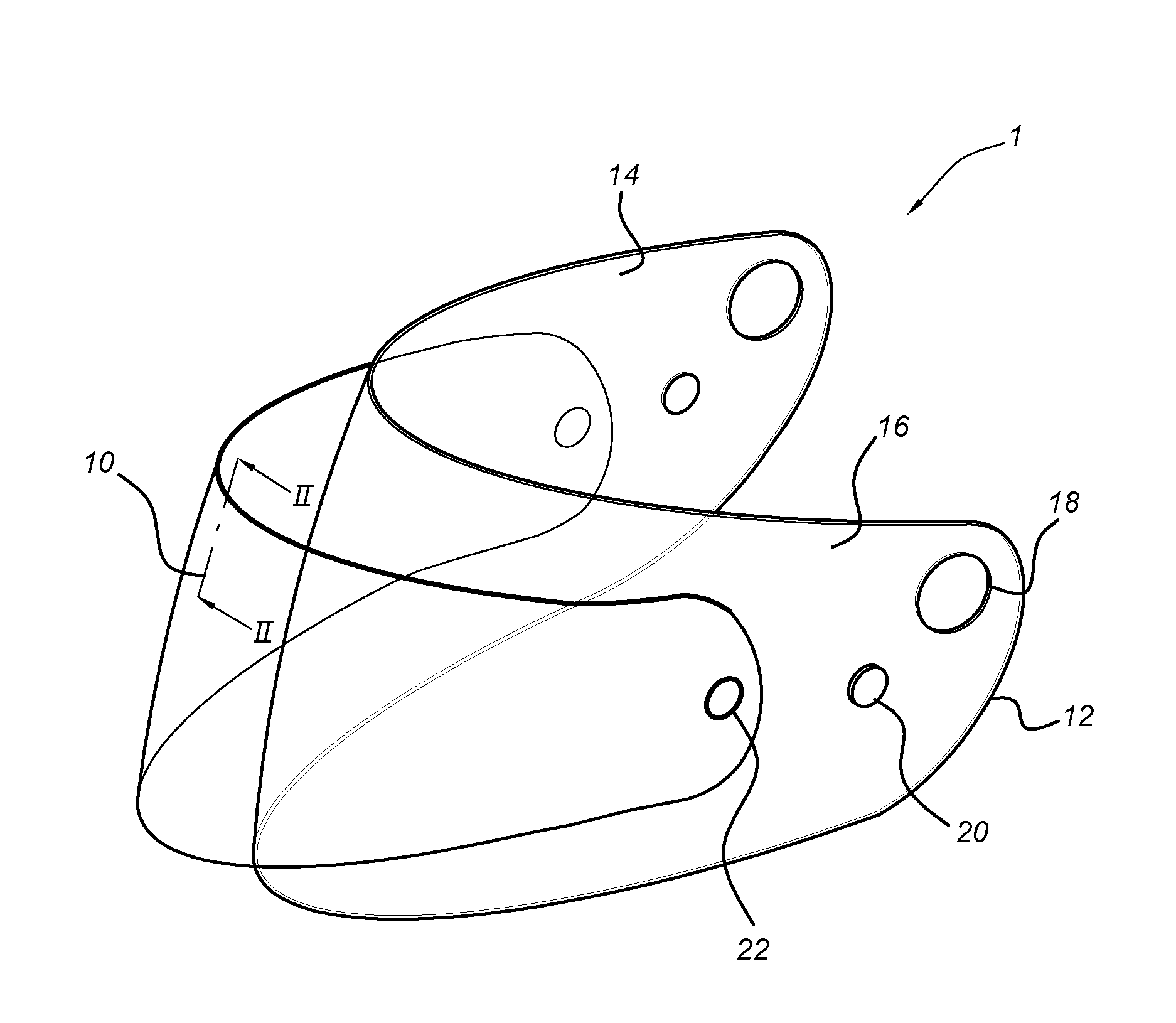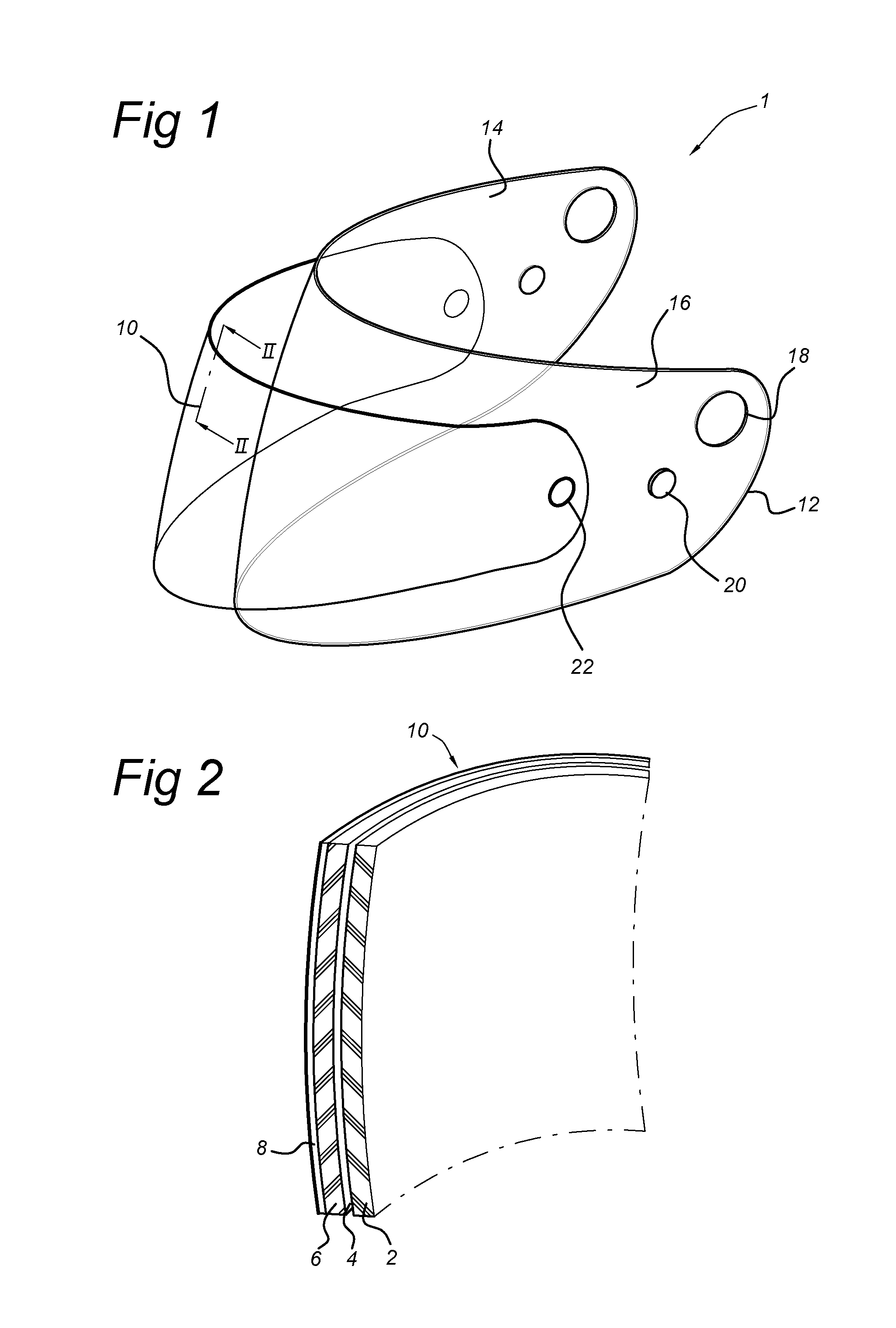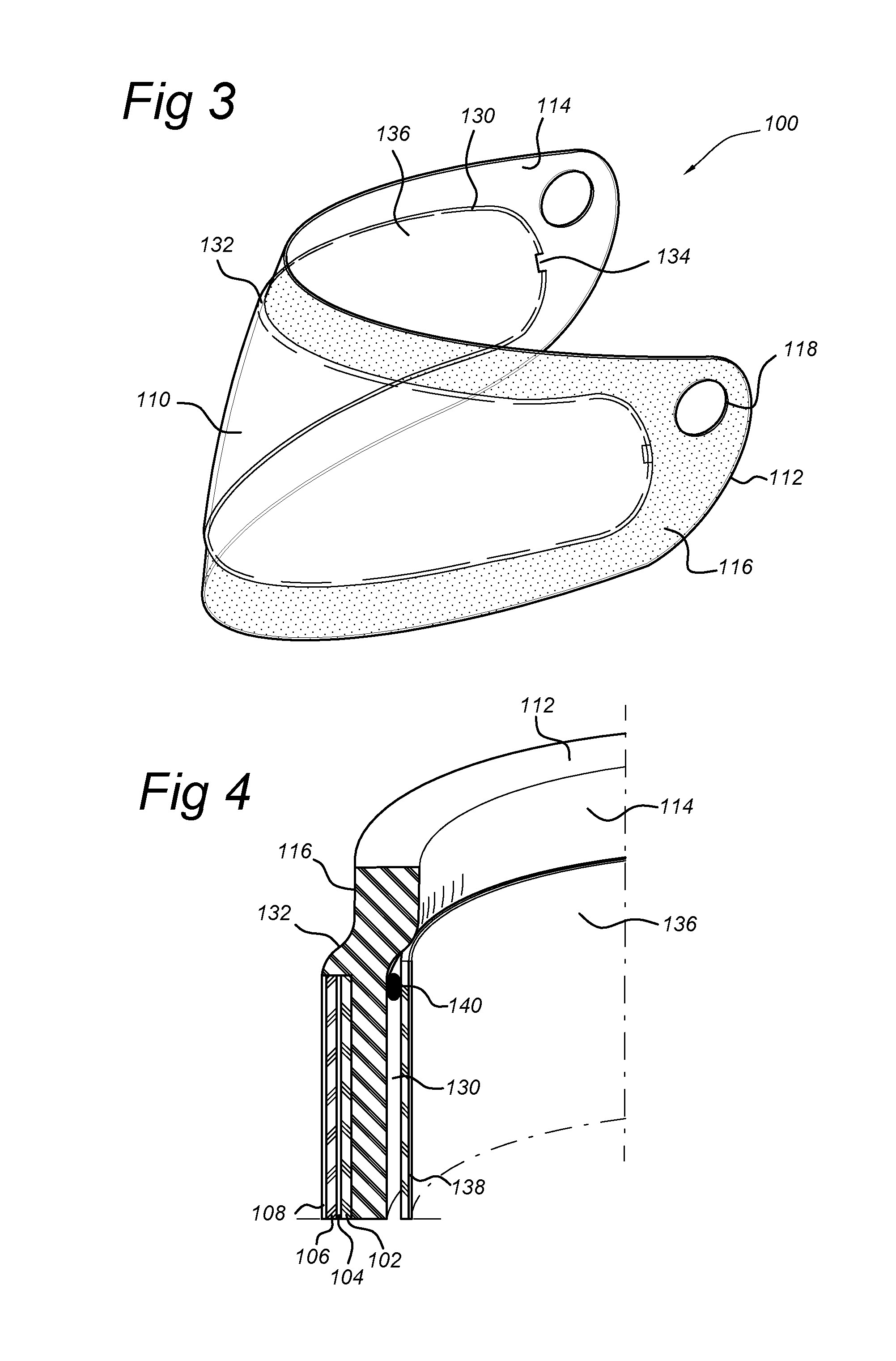Visor and method of manufacture
a technology of visor and manufacturing method, which is applied in the field of visors, can solve the problems of reducing reducing the light transmission and optical quality, and requiring costly helmet revisions to the shell and inner lining, so as to avoid reflection, refraction, dirt and moisture ingress, and the effect of increasing the thickness of the visor
- Summary
- Abstract
- Description
- Claims
- Application Information
AI Technical Summary
Benefits of technology
Problems solved by technology
Method used
Image
Examples
Embodiment Construction
[0034]FIG. 1 shows a perspective view of a visor according to the present invention in an exploded view. The visor 1 is intended for a motorcycle helmet (not shown) and comprises a curved, transparent shield 12 having an inner surface 14 and an outer surface 16. The shield is provided with attachment elements 18 for connecting the visor 1 to the helmet and magnetic studs 20. The shield 12 is otherwise conventional in construction and is formed of polycarbonate material having a quantity of UV stabilizing additives sufficient to prevent discoloration of the visor during normal daytime use. The shield 12 has a thickness of around 2 mm. A photochromatic insert 10 is provided located in front of the shield outer surface 16. The insert 10 is also transparent and curved to match the shield 12. The insert 10 is provided with magnetic disks 22.
[0035]FIG. 2 shows a partial cross-section taken through the insert 10 of FIG. 1. As can be seen, the insert 10 comprises an interface layer 2, an in...
PUM
| Property | Measurement | Unit |
|---|---|---|
| thickness | aaaaa | aaaaa |
| thickness | aaaaa | aaaaa |
| thickness | aaaaa | aaaaa |
Abstract
Description
Claims
Application Information
 Login to View More
Login to View More - R&D
- Intellectual Property
- Life Sciences
- Materials
- Tech Scout
- Unparalleled Data Quality
- Higher Quality Content
- 60% Fewer Hallucinations
Browse by: Latest US Patents, China's latest patents, Technical Efficacy Thesaurus, Application Domain, Technology Topic, Popular Technical Reports.
© 2025 PatSnap. All rights reserved.Legal|Privacy policy|Modern Slavery Act Transparency Statement|Sitemap|About US| Contact US: help@patsnap.com



